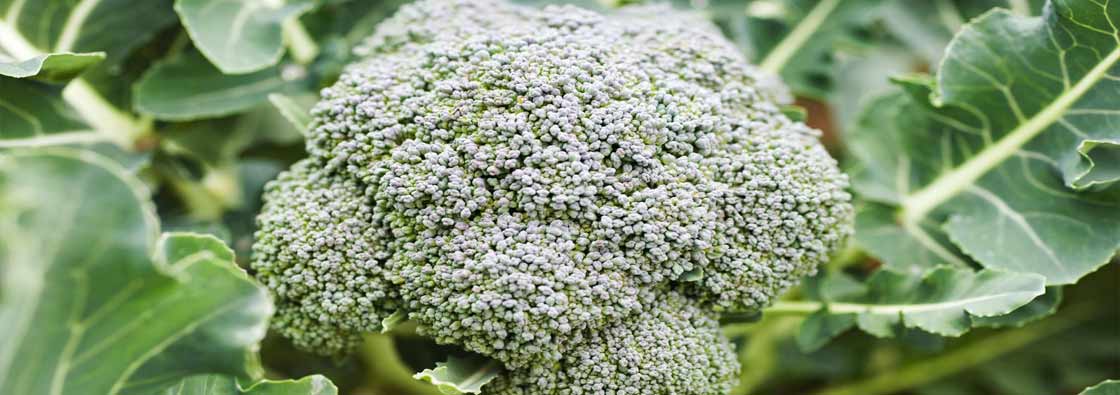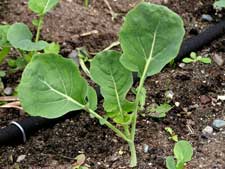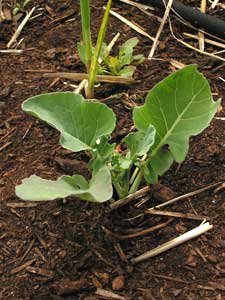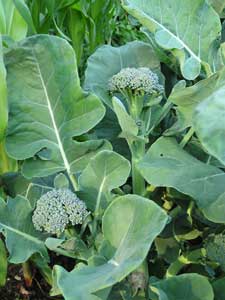
 How To Grow Broccoli
How To Grow Broccoli
Broccoli not only tastes delicious, it has antioxidants that help the body fight off diseases. Growing broccoli in your home garden is also a great way to get the kids to eat their veggies, especially if you include them in the growing process. You would be surprised!
Broccoli is a cool weather crop, making it perfect for the northwest climate.
 Planting Broccoli
Planting Broccoli
Before planting broccoli make sure the soil is amended with plenty of compost or well rotted manure, we usually mix in some organic 5-5-5 fertilizer as well.
One mistake we’ve made in the past is planting too late in the spring. It’s a sad sight to see your broccoli heads starting to flower right after they start to form, which will happen during the heat of the summer.
You can start broccoli indoors about six weeks before the last frost, though we’ve also had great luck planting seeds directly in the garden bed in late March. Make a 1/4″ deep depression in the soil and plant your seeds 3″ apart. You’ll be thinning to 14″-18″ later in the season, but it’s wise to try and get as many seeds germinated as possible. Once your seeds are down, cover them with 1/4″ of soil and gently pat the soil down.
Make sure you water with care until germination, you don’t want to wash out those tiny little seeds! A watering wand on it’s most gentle setting works well, or better yet, use a soaker hose. Just be careful not to place the hose over your seeds!
If you plan on using transplants make sure the roots are handled very carefully. Broccoli can be very finicky and if a transplant is handled improperly it may have a minor seizure and flop over on the ground. Yikes!
If your using starts, plant them 14″-18″ apart. Your garden bed might look sparse at first, but they will grow to be quite large.
 Caring For Broccoli
Caring For Broccoli
To produce a good crop, broccoli needs plenty of water, it’s a very thirsty plant (especially while the heads are forming). Keep the soil evenly moist during the growing season, a layer of mulch can do wonders for retaining moisture. Broccoli does have a relatively shallow root system, letting the soil dry out can stunt your plants…or worse.
The plants can become quite large and also require plenty of space, so don’t be afraid to thin! Thin out the smaller and weaker plants, leaving 14″-18″ of space between the keepers.
Sometimes it’s hard to yank out those baby plants that you’ve taken precious care of, but proper thinning will always make the surrounding plants much happier, allowing them more water, nutrients, and room to grow!
Broccoli is a very heavy feeder and requires plenty of nitrogen and boron. You should use organic fertilizer every 3-4 weeks with during the growing season to give your plants an extra boost of energy.
 Harvesting Broccoli
Harvesting Broccoli
Is it time yet? You want to harvest when the buds are dark green, tight and close to flowering. However, don’t wait too long since once you see those tiny yellow flowers popping out it’s all over with.
When you think they are ready, get a sharp knife and cut the main head off at the base of it’s stalk (not the stalk of the plant, just the main head). Off to the kitchen she goes. This will encourage the side shoots grow and start forming smaller heads which are just as delicious!
Broccoli Pests
Flea Beetles, Root Maggots, Aphids
Broccoli Diseases
Fungal Rot
Broccoli Friends
Beets, Carrots, Lettuce, Onions, Mint
Broccoli Foes
Beans, Strawberries
Broccoli Varieties
Spring – Early Packman, Early Emerald
Summer – Umpqua, Southern Comet
Fall – Saga, Arcadia
Tips For Growing Broccoli
Don’t plant broccoli in an area where you have planted brassicas (spinach, cabbage, cauliflower, etc.) within the past few years as it can introduce pest and disease problems.


